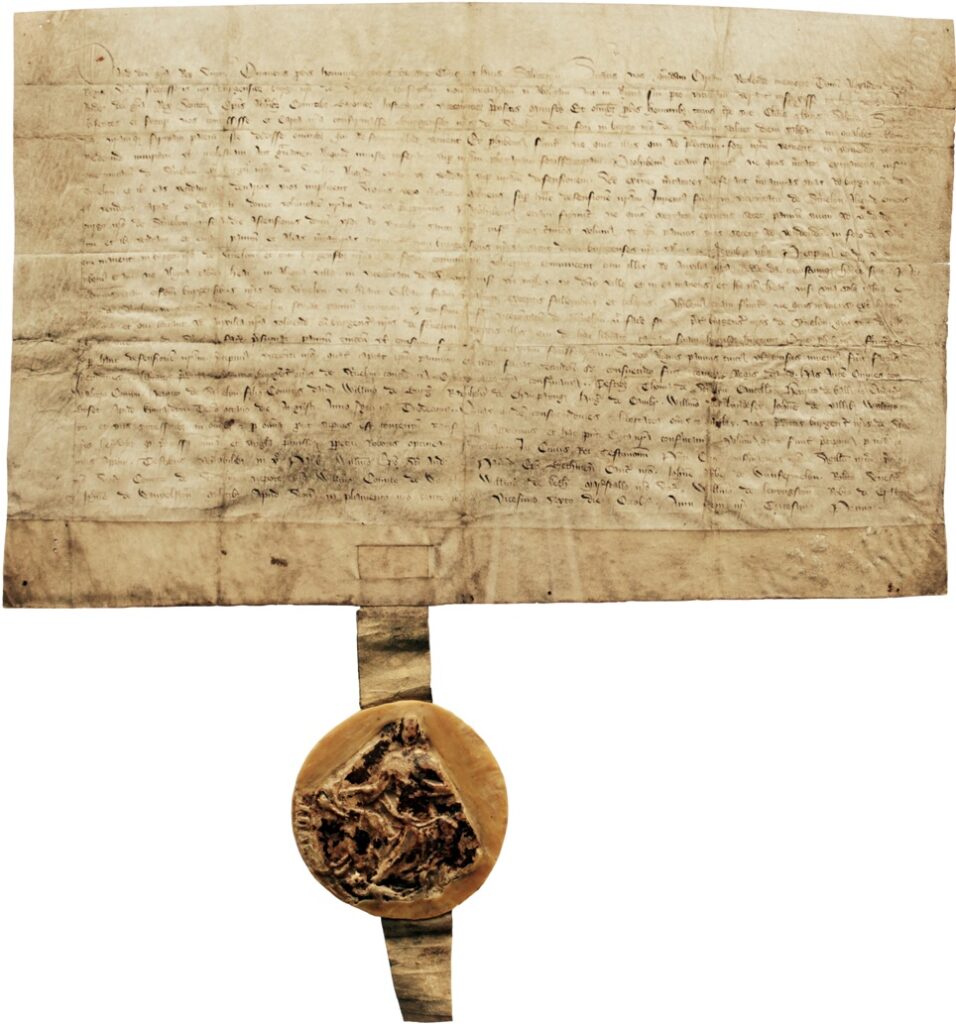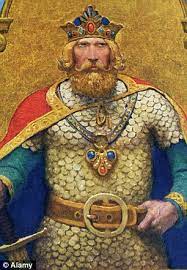Stirling Castle, built originally in the early twelfth century (although the site has is likely to have been a stronghold since the iron age or earlier), and standing in its dramatic setting on the plug of volcanic rock that forms the highest point of the city, is understandably famous. However, did you know that King David II, son of Robert the Bruce, is believed to have known the area on which the castle stood as Snowdoun?
Now, the name Snowdon is closely linked to King Arthur in Welsh myths. James IVth’s court poet Sir David Lyndsay, writing in the early 16th century, goes even further and talks about a Round Table having been present in the Castle in his long satirical poem The testament and complaint of the Papyngo.
Adew, fair Snawdoun, with thy touris hie,
Thy Chapell Royall, park and tabyll round.
This ‘Round Table’ also features in John Barbour’s epic 14th century poem The Bruce about the Wars of Independence.
And beneuth the castell went thai sone,
Rycht be the Rond Table away
Medieval Kings and poets clearly believed there was an Arthurian connection to Stirling Castle, and that the King’s famous round table lay just below it. It is thought that this is likely to refer to a probable prehistoric mound under the central lump of what’s now the King’s Knot (the Cup and Saucer). But is it really possible that King Arthur had a base at Stirling?
There are many versions of the Arthur legend in poems and stories going right back to mediaeval times – it is clearly a compelling myth. Suggestions for where the places in the legends might be situated vary from Glastonbury Tor to Wales to Cornwall as well as Central Scotland. The first real person that can be identified as a possible ‘Arthur’ was a man named Artur, the 6th century son of the King of Dalriada, Aedan Mac Gabrain, who appears in English, Scots and Irish written sources. Artur the Gael was a real person with something like the right name and was apparently born somewhere in the vicinity of the River Forth. All this can really tell us, though, is that the legend of King Arthur was known around Stirling. It is impossible to say if there really was an actual King Arthur. Also, there are many other candidates from around Great Britain and Ireland and even France, each having their supporters amongst historians and enthusiasts. If this is the case, what was it that King David II was talking about?
When considering this, it should be remembered that David was born during the Wars of Independence, and spent his whole life fighting for the cause of Scottish sovereignty against the English, at one time even losing his liberty for the cause, when he was taken prisoner by his enemies. His father, Robert Bruce, had destroyed Stirling Castle after his victory at Bannockburn in 1314, having only captured it back from the English 30 years previous to this date. It is much more likely that the statement made by David represents the king engaging in myth making and propaganda, attempting to associate his and his father’s kingship with that of a legendarily strong and righteous monarch, blessed by God and loved by his people. Whilst at the same time, impressing upon his political opponents who sought to subdue Scotland, that it was an autonomous nation state in its own right and not just a vassal of the English Crown. However, it is still the case that the place name Snowdon remains associated with the Top O’ The Town, as we have Snowdon Place and the Snowdon Cemetery there. So it is still possible to believe that, whoever he might have been, at some point the real Arthur did visit Stirling!

